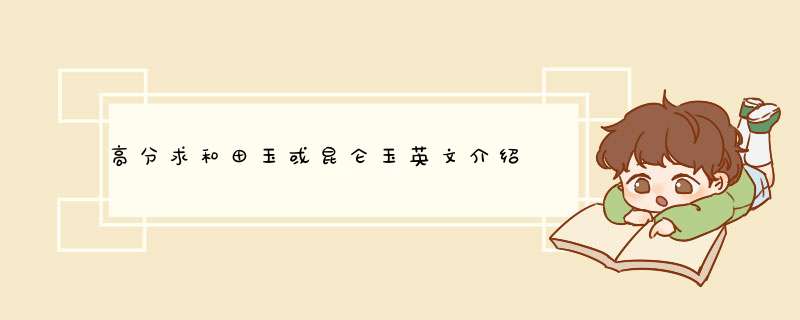
Nephrite is a variety of the calcium and magnesium-rich amphibole mineral actinolite (aggregates of which also make up one form of asbestos) The chemical formula for nephrite is Ca2(Mg,Fe)5Si8O22(OH)2It is one of two different mineral species called jade The other mineral species known as jade is jadeite, which is a variety of pyroxene While nephrite jade possess mainly grays and greens (and occasionally yellows, browns or whites), Jadeite jade, which is rarer, can also contain blacks, reds, pinks and violets Nephrite jade is an ornamental stone, used in carvings, beads, or cabochon cut gemstones
The name nephrite is derived from lapis nephriticus, which means 'kidney stone' and is the Latin version of the Spanish piedra de ijada[2] Accordingly, nephrite jade was once believed to be a cure for kidney stones
Nephrite can be found in a translucent white to very light yellow form which is known in China as mutton fat jade,in an opaque white to very light brown or gray which is known as chicken bone jade,as well as in a variety of green colours Canada is the principal source of modern lapidary nephrite Nephrite jade was used mostly in pre-1800 China as well as in New Zealand, the Pacific Coast and Atlantic Coasts of North America, Neolithic Europe, and southeast Asia
History
Prehistoric and historic China
During Neolithic times, the key known sources of nephrite jade in China for utilitarian and ceremonial jade items were the now depleted deposits in the Ningshao area in the Yangtze River Delta (Liangzhu culture 3400–2250 BC) and in an area of the Liaoning province in Inner Mongolia (Hongshan culture 4700–2200 BC) Jade was used to create many utilitarian and ceremonial objects, ranging from indoor decorative items to jade burial suits Jade was considered the "imperial gem" From about the earliest Chinese dynasties until present, the jade deposits in most use were from the region of Khotan in the Western Chinese province of Xinjiang (jade deposits from other areas of China, such as Lantian, Shaanxi, were also in great demand) There, white and greenish nephrite jade is found in small quarries and as pebbles and boulders in the rivers flowing from the Kuen-Lun mountain range northward into the Takla-Makan desert area River jade collection was concentrated in the Yarkand, the White Jade (Yurungkash) and Black Jade (Karakash) Rivers From the Kingdom of Khotan, on the southern leg of the Silk Road, yearly tribute payments consisting of the most precious white jade were made to the Chinese imperial court and there transformed into objets d'art by skilled artisans, as jade was considered more valuable than gold or silver
Māori
Nephrite jade in New Zealand is known as pounamu in the Māori language, and is highly valued, playing an important role in Māori culture It is considered a taonga, or treasure, and therefore protected under the Treaty of Waitangi, and the exploitation of it is restricted and closely monitored The South Island of New Zealand is Te Wai Pounamu in Māori — "The [land of] Greenstone Water" — because that is where it occurs
NephriteWeapons and ornaments were made of it; in particular the mere (short club), and the hei-tiki (neck pendant) These were believed to have their own mana, were handed down as valuable heirlooms, and often given as gifts to seal important agreements It was also used for a range of tools such as adzes, as Māori had no metal tools
In New Zealand English its normal name is "greenstone" Jade jewellery in Māori designs is widely popular with locals of all races, and with tourists – although much of the jade itself is now imported from British Columbia and elsewhere
Other names
Besides the terms already mentioned, nephrite has the following synonyms and varieties: aotea, axe-stone, BC jade, beilstein, kidney stone, lapis nephriticus, nephrit, nephrita, New Zealand greenstone, New Zealand jade,spinach jade (dark grayish green) and talcum nephriticus Tomb jade or grave jade are names given to ancient burial nephrite pieces that have a brown or chalky white texture
额~~~你可以看看重量够不够~~~和田玉的密度很大~~~比一般玉石或者料器的要重许多
另外可能是的缘故吧,看起来不像是白玉,倒像是青白玉,呵呵
这个雕工还可以~~~不过我觉得如果是真的,大概是700元左右吧
和田玉和俄罗斯玉在硬度上是有区别的,和田玉硬度为6至65,俄罗斯玉的硬度低于和田玉在52至54之间,用硬度为55至6的小钢刀划几下,毫无痕迹者可能是和田玉,也可以用玉件角楞划磨硬度为5至55的玻璃,使其出现痕迹者可能是和田玉。
滴水观察:由于和田玉密度高,将水滴上后,水滴边缘整齐而不扩散。
透光观察:将玉朝向光明处,比如阳光或灯光处,颜色剔透、结构均匀者可能是和田玉。俄罗斯玉在透光的地方,用肉眼稍稍观察,就能看到“毛颤状”的结构。
手摸:和田玉拿在手中,摸一摸、搓一搓,有温润、油滑之感,俄罗斯玉由于结构粒度较粗,手感较轻。同时,俄罗斯玉韧性差,易起性,即雕刻时易出现“崩口”,所以要注意观察玉器线条的崩裂情况。
阿富汗玉(市面上称阿富汗料):由于阿富汗玉玉质非常细腻均匀,光泽油润,肉眼看不到玉 花,经常用来冒充上等白玉或羊脂玉,辨别的方法很简单,只要用手指甲使劲刮一下,如果能刮下一点白色的皮,就不是白玉。
你要是碰到拿不准的玉器千万不要购买,一定要先请有经验的玉友或者到琢艺轩的在线鉴定做免费鉴定后在决定,避免遭受损失
近年来买和田玉送礼的人很多,因为和田玉是保值投资,而本身价值不菲,所以用来送礼既有面子又有心意。尤其是送给你的老领导,因为带玉是有益身体健康的,俗语说“人养玉三年,玉养人一生”就是这个道理。而且老年人开始淡化名利注重修身养性,所以送和田玉是很正确的选择。你可以去琢艺轩看看,那里有很多精品的玉雕,海派的细腻雕风体现的淋漓尽致。各种造型,总能选到你认为合适的。
您好
很高兴为您回答
如果是和田玉的话,推荐给楼主几种常用的鉴别手段,如果的玉上面带有皮,而你想知道这皮是真是假,可以用浓84消毒液来浸泡你的玉器,一个晚上,如果是真皮自然不会掉,如果是假皮,自见分晓鉴别和田玉真假我常用的手段是,简单点,用小刀去刻你的玉,和田玉的硬度是不会留下划痕的,如果起毛或出划痕,那必然是假货再就是用舌尖去舔你的玉,如果感觉你舌尖发瑟,那就应该没的问题这点需要经验,还有一种就是用滴水法,把水沾到手指上,滴到你的玉上,如果水珠不散,则为真,如果水珠立即从旁边滚落,无疑,是假因为和田玉密度高。
或者到我们的御府和田玉网站上查看资料!
怎样挑选和田玉手镯
在众多首饰中,最受女士青睐的是玉手镯。走在大街上,细心观察一下女人的手腕上,十有八九会戴一手镯,不管款式、种水、质地如何,仿佛女人和手镯有着天然的缘分。那么,如何选购和田玉手镯如何挑选玉镯呢?
御府和田玉网的玉石专家向大家介绍如何挑选和田玉手镯:
从和田玉手镯的颜色上看,主要有白玉手镯、墨玉手镯、碧玉手镯、青白玉手镯及青玉手镯等;从和田玉手镯的原料来看,主要有子料手镯与山料手镯两种;从和田玉手镯的款式上看,有宽边、窄边两种,或小口径、大口径两种,或平边、花边两种。
和田玉手镯中,白玉与子料手镯档次最高,价格也最高,目前市场上的子料白玉手镯,价格都在数万元以上。纯墨玉手镯目前不多见,青花手镯以其黑白分明、特点显著,也是市场上多见的和田玉手镯品种。品质较好的青花手镯、正和田玉的碧玉手镯,价格都不菲。至于青白玉手镯及青玉手镯,则较为普通,价格也较便宜。
制作手镯比较费料,一件好的和田玉手镯首先看其圆度好不好。例如其外形轮廓是否对称,若是不对称,则影响美观。其次看条子粗细与圈口的关系。一般讲,圈口小,条子相应就要细;圈口大,条子就要粗。
注意事项
好的和田玉镯的圈口大小与条子粗细协调美观,加工精细、规整,表面抛光好,手摸上去均匀一致,有润滑感。好的雕刻有图案和纹饰的手镯,雕工精细,抛光到位,图案对称、合理,手感好。
三个错误挑选和田玉手镯的方法
误区一,买镯子要看颜色,越白越好。从专业角度来说,和田玉手镯的挑选一定要全面地衡量,不但要白还要有好的润度(油性)。有的手镯料子虽然很白但是玉料的石性很重,所谓的石性重就是玉料看起来很干,颗粒感很重,入眼很不舒服,没有和田玉应有的油润滋腻的感觉。这种石性的白料手镯价格不应该很贵,适中即可。我们应该把和田玉的油润度和细度放在挑选的第一位,适当放低一些对白度的要求,这样的和田青玉手镯更值得佩戴收藏。
误区二,买就买最好的手镯,要买羊脂级的。
只有白度和润度两者都具备的白玉料质才能称得上是独一无二。但是实际情况来看,这样的手镯极少能够碰到,自然创造的一切物质都是有缺陷的,我们不能强求天然东西的每一个细节,即使能够碰到这种两者兼具的手镯价格也会很高,一般家庭收入是较难承受的。许多卖家就是抓住我们追求羊脂玉这种心态,拿起一只颜色白一些的手镯就说是羊脂玉,以优惠的价格煽动消费者购买,而实际质量却相差很远。
误区三,只买新疆和田本地的软玉,绝对不买俄料,青海料软玉。
新疆本地产出的软玉固然料质优良油润,但是也不乏次品。而青海、俄罗斯产出的玉料也有很多细腻油润的精料是值得收藏的,而且无论是青海料、俄料还是新疆本地的软玉玉料,成份都是一模一样的,物理性质(硬度、密度、折光率等)也都相同,即使在国家鉴定所用大型设备检测都不能区分出它们的产地。我们和田玉爱好者在收藏过程中不应该把和田玉的产地因素放在首要地位,而应该注重玉质、颜色、雕刻工艺等,这样才能收获丰硕,收藏到我们喜欢的玉石。
欢迎分享,转载请注明来源:浪漫分享网

 微信扫一扫
微信扫一扫
 支付宝扫一扫
支付宝扫一扫
评论列表(0条)